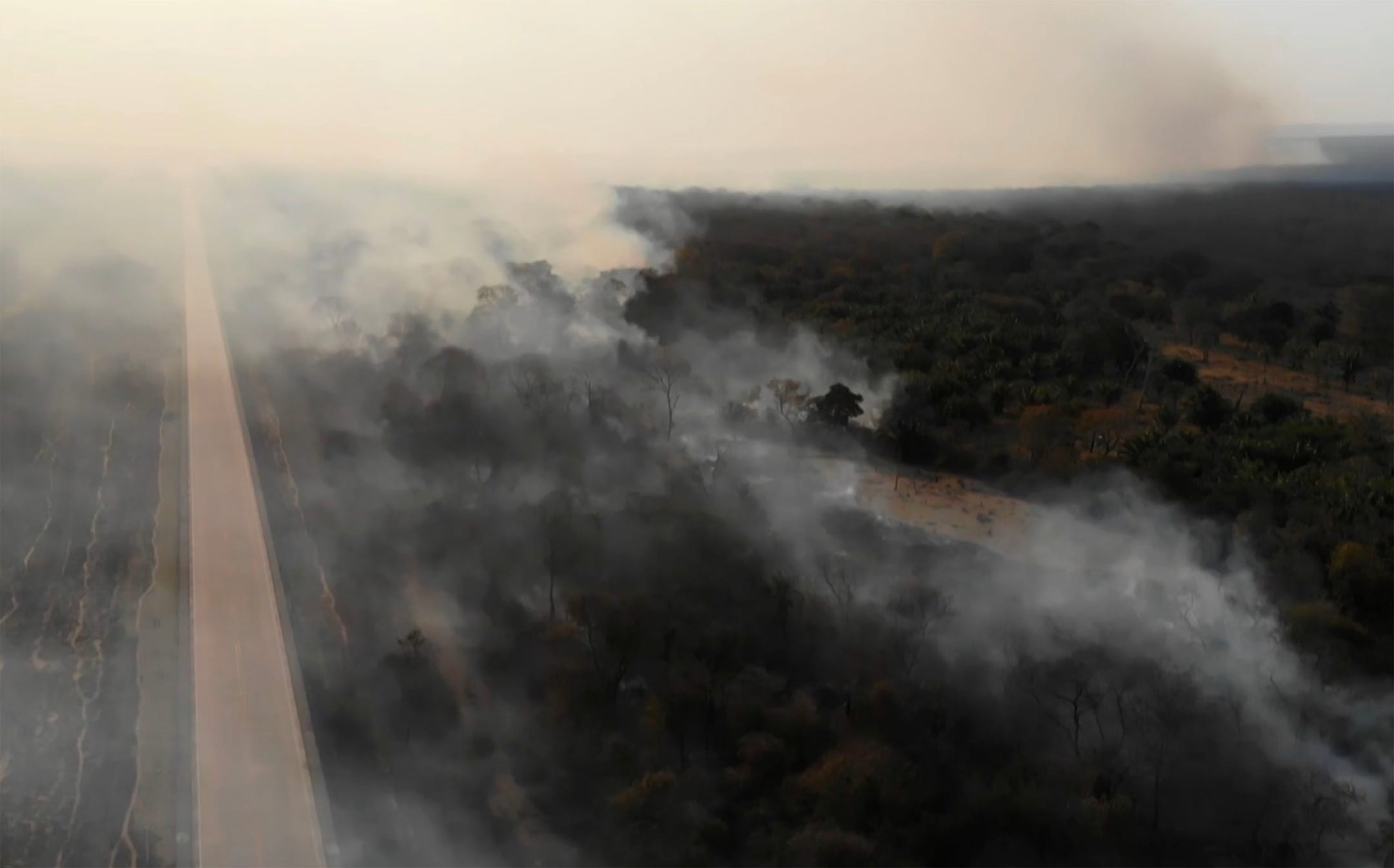
The lungs of the world” are burning.
More than 74,000 fires have consumed approximately 7,200 square miles this year in the Brazilian portion of the Amazon, according to Brazil’s National Institute of Space Research. The world counts on its largest rainforest to cleanse our atmosphere of greenhouse gases.
Here are six graphics that put the number and scale of this year’s fires in perspective as well as the potential implications for climate change.
First, a look at active fires in South America during a 24-hour period shows just how active this season has been.
Active fires in the Amazon
Fire alerts have surged
More than 55,000 fire alerts have been issued this month in the Amazon’s Pará region.
Fires are not uncommon in the Amazon, but this region — with some of the wettest land in the world — rarely sees massive fires.
Nigel Sizer, chief program officer of Rainforest Alliance, said if it’s a dry season and you set a fire in the undergrowth it may spread a little bit, but it peters out. But, he said, once you start clearing forest and let the trees dry, fires can cause more damage. “The forest shifts from being a fire-resistant ecosystem to a fire-prone ecosystem,” Sizer said.
The toll on the rainforest this year
The increase in fires this year adds to the thousands of square miles that have been lost in previous decades because of fire, industrial logging, fragmentation and farming.
Amazon’s deforestation rate accelerates
Brazilian President Jair Bolsonaro’s government may be encouraging farmers to illegally clear land in the Amazon.
“With confidence, we can say that a lot of that is illegal and is happening because the government has given the nod to illegal clearing and burning across the Amazon,” Sizer said.
The loss of these lands is more worrisome considering the significant increase in the world’s carbon dioxide levels during the past 100 years. CO2 is the greenhouse gas scientists say is most responsible for global warming. When fossil fuels such as coal, oil and gas are burned to power our world, they release CO2 and other greenhouse gases such as methane. These gases trap solar radiation in the atmosphere.
Besides further eroding the amount of forest that can remove greenhouse gases, the fires are actually releasing carbon dioxide.
Fire has produced high levels of carbon dioxide
Carbon dioxide at record levels
These events come on the heels of a greenhouse gas milestone earlier this year when carbon dioxide levels at Hawaii’s Mauna Loa Observatory topped 415 parts per million — the highest at least 800,000 years.
Ramon Padilla, Javier Zarracina, Janet Loehrke, Ryan Miller and Doyle Rice contributed to this report.



